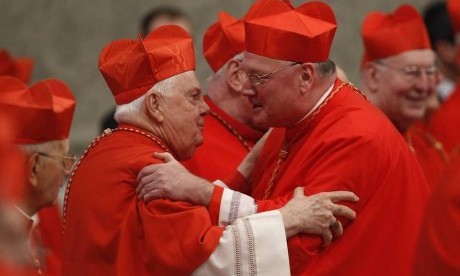US-dominated globalization is not compatible with cultures of the south.
Among the 22 new cardinals receiving a biretta on February 18 from Pope Benedict XVI, 10 hold positions in the Roman Curia. Italians comprise seven of the 22, making them the largest group. Only three are from outside Europe or North America. So this consistory hardly reflects the recent demographic shifts in the Church, or the increasingly important part played by the developing world.
This has prompted the leading Indian theologian, Michael Amaladoss SJ, to reflect on the Church’s attitude to multiculturalism in general.
This report first appeared in the Indian Jesuit magazine Jivan.
One of the major concerns about globalization is that, through market forces and media bombardment, one single consumer culture could come to be enforced upon the rest of the world; a culture that emanates from the USA.
It insinuates itself via mass media, technology, communications and the way people dress and feed themselves. It does not concern itself so much with deeper cultural elements such as language, philosophy, literature and ways of living, thinking and relating.
Thankfully, this is still a multicultural world. I was surprised to hear that stated recently by the French Bishops’ Conference, as the French are usually exceptionally fierce on matters of national culture. However, a statement from them last October spoke of the end of the West’s traditional, distinctive identity, due to waves of immigration.
The desire to impose one culture upon another remains a constant temptation, locally as well as globally. In India there is a dominant culture that seeks to make all others subordinate, which has an impact especially on the Dalits and indigenous peoples. Indeed, some would say that the unity of a nation depends on the unity of its culture; some would like to see total religious homogeneity.
So the defense of multiculturalism and religious pluralism is a necessary and constant duty, and we are pleased that they both receive protection from the Constitution of India, with special measures for the protection of minorities. Read more
Sources
- UCA News
- Image: The Boston Globe
Additional reading
News category: Analysis and Comment.




